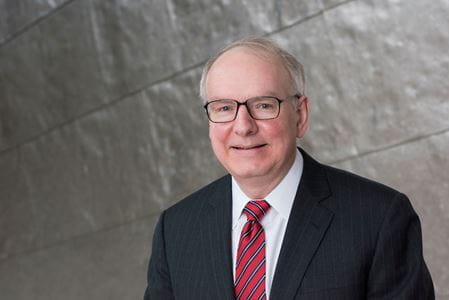Founded in 1903, Indiana University School of Medicine has a long history of innovation and excellence in medical education, research and clinical care to improve health in Indiana and beyond. IU School of Medicine is the largest medical school in the country and the only allopathic medical school in Indiana. Over 6,500 full time and volunteer faculty educate over 2,000 MD, PhD, master’s and undergraduate students along with over 1,100 clinical residents and fellows. The school has been a pioneer in regional medical education, with nine campuses and partnerships with six universities and 50 health systems and clinics to deliver its curriculum. Our faculty developed the cure for testicular cancer, pioneered echocardiography, lithotripsy and umbilical cord transplantation, developed the first electronic medical record, and the country’s first and largest electronic health information exchange. That tradition of research excellence continues today, with our research funding more than doubling over the past decade to over $450 million.
IU School of Medicine's primary clinical partner is IU Health (formerly Clarian Health), formed in 1997 as the result of a merger between University Hospital, Riley Children’s Hospital and Methodist Hospital. IU Health has grown into a 16 hospital, $7.9 billion revenue statewide health system that has twice earned a place on the US News and World Report Honor Roll. Other important partners for IU School of Medicine include Eskenazi Hospital, the Roudebush VA Hospital along with over other 50 hospitals and clinics across the state.
The new strategic plan for IU School of Medicine, part of the IU 2030 Strategic Plan, will be the roadmap for the school to advance excellence in all of its missions while supporting Indiana University’s strategic goals of Student Success and Opportunity, Transformative Research and Creativity, and Service to Our State and Beyond.
The IU School of Medicine plan was made possible through the dedication of our faculty, staff and learners across our nine campuses. We are especially grateful to our co-chairs Michelle Artmeier, David Wallace and Sam Yeap who helped gather input from countless members of our community as well as those outside the school.
Together with our executive associate deans, Dr. Patricia Treadwell as Special Advisor to the Dean on Diversity affairs, and project manager Katherine Eessalu, this team deserves most of the credit for revising, enhancing and bringing the plan to its current form.
As we worked collectively to develop a plan for the School of Medicine, several cross-cutting themes emerged. The first was the importance of the School’s core values of excellence, respect, diversity, integrity and cooperation—they are fundamental for how we are going to treat each other and how we are going to work together. We need to reinforce them at every opportunity.
Secondly, we recognized a need to address the vitality of our people, including faculty, staff and learners. We aren’t going to achieve our ambitious goals without their health, well-being and engagement. We have a responsibility to do all we can to prevent burnout, address mental health challenges and help people find meaning and joy in their work. We want to make sure professional development, leadership development and mentorship opportunities are available at all levels of the organization and we will strive to recognize and celebrate accomplishments of people across the school.
Third, we heard the importance of bidirectional communication with our faculty, staff and learners and broader community including over 20,000 living alumni. Each person working in the school deserves to have clear roles, goals and responsibilities and a clear understanding of what we are trying to accomplish and how they fit into the school’s aspirations. In addition, we want to hear their ideas on how to make the School of Medicine and its work better.
Fourth, whether it is improving outcomes for patients, graduation rates for our learners, or the climate in the school, we are going to use data to make better decisions. We will identify what data is most significant and useful, create systems for gathering and analyzing that data and most importantly act on that data.
Finally, the School of Medicine must be a diverse place, reflecting the diversity of the State, where all are included, welcomed and supported—a place where they can be at their best. Through promoting diversity and equity within the school and, where possible, in the communities we serve we will be more successful in our mission of improving health for all.
